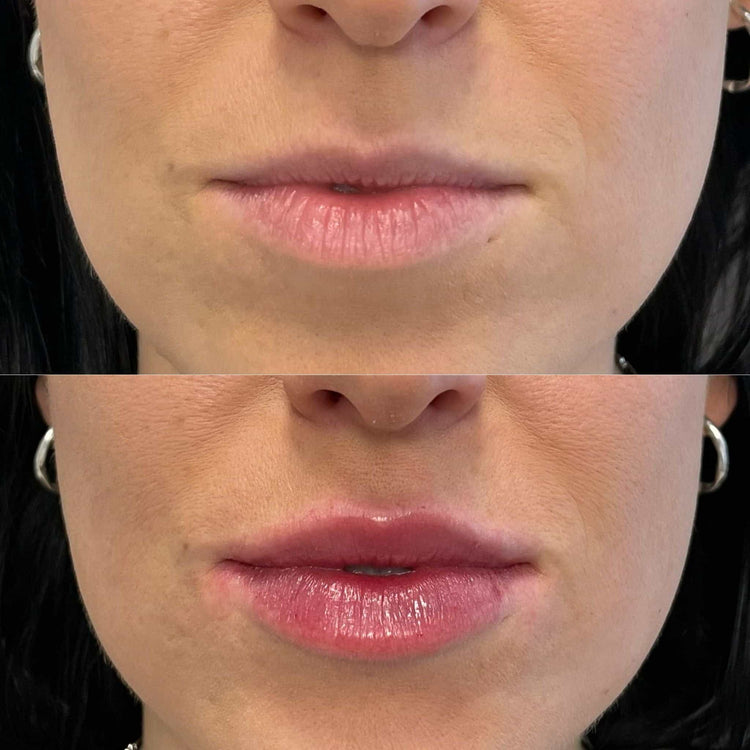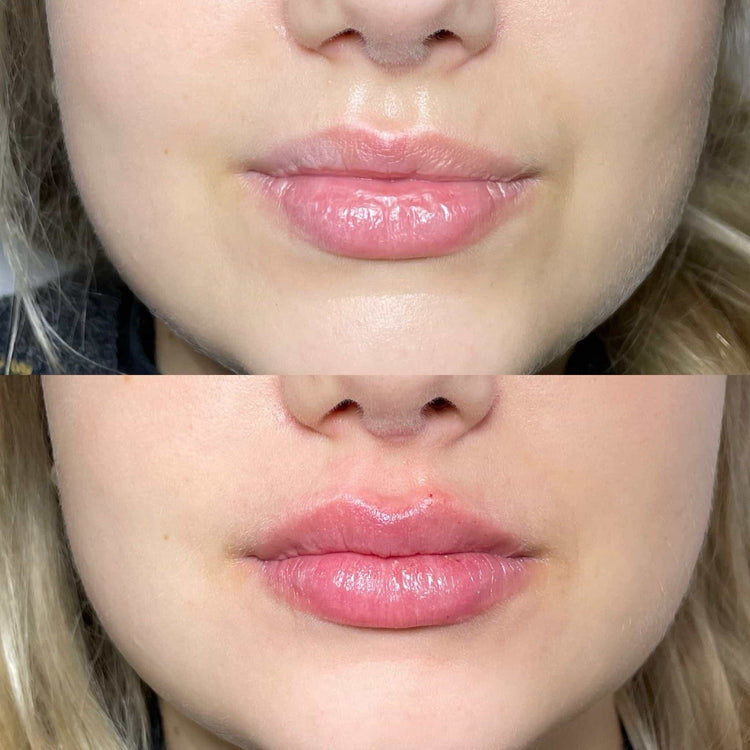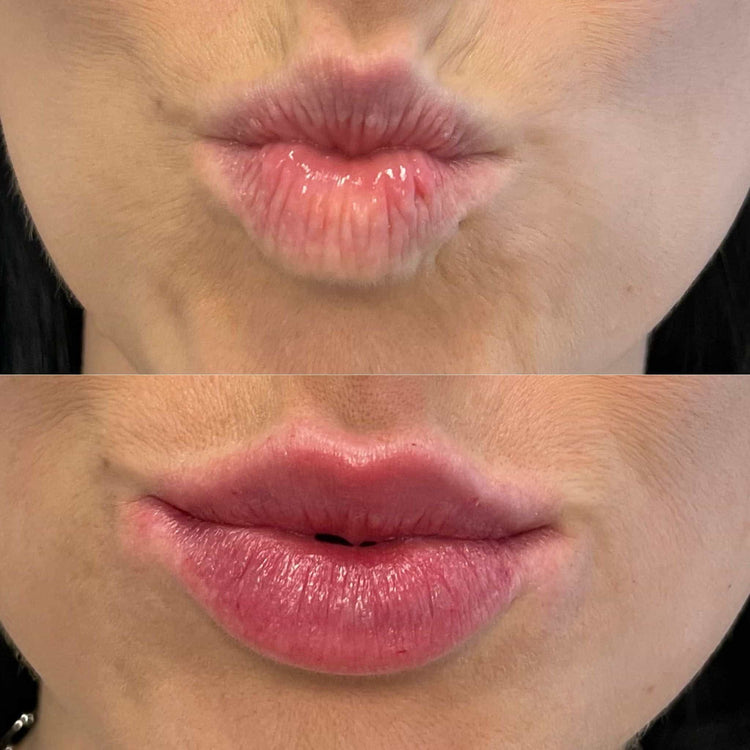Are Lip Fillers Safe?
Lip fillers have become increasingly popular for enhancing lip volume and shape, but questions about their safety often arise. Understanding the potential risks and complications associated with lip fillers is crucial before making a decision.
Understanding Hyaluronic Acid
Lip fillers are generally safe when administered by a qualified and experienced practitioner. The most common ingredient used in lip fillers is hyaluronic acid, a naturally occurring substance found in the body. Hyaluronic acid attracts and retains moisture, giving lips a fuller and smoother appearance.
Although hyaluronic acid is generally well-tolerated, potential side effects can include swelling, redness, bruising, and tenderness at the injection site. These side effects are typically mild and temporary.
More serious complications, though rare, can occur. These may include infection, allergic reactions, or asymmetry in lip shape.
Types of Lip Fillers
Lip fillers have become increasingly popular for enhancing lip volume and shape, but questions about their safety often arise. Understanding the potential risks and complications associated with lip fillers is crucial before making a decision.
Lip fillers are generally safe when administered by a qualified and experienced practitioner. The most common ingredient used in lip fillers is hyaluronic acid, a naturally occurring substance found in the body. Hyaluronic acid attracts and retains moisture, giving lips a fuller and smoother appearance.
Although hyaluronic acid is generally well-tolerated, potential side effects can include swelling, redness, bruising, and tenderness at the injection site. These side effects are typically mild and temporary.
More serious complications, though rare, can occur. These may include infection, allergic reactions, or asymmetry in lip shape.
- Infection: As with any injection, there is a risk of infection at the injection site. This can be minimized by ensuring the practitioner uses sterile techniques.
- Allergic Reactions: Some people may be allergic to hyaluronic acid or other ingredients in lip fillers. It’s important to discuss your medical history with your practitioner before getting lip fillers.
- Asymmetry: Lip filler injections can sometimes result in asymmetry, where one lip appears fuller than the other. This is usually temporary and can be corrected with further treatment.
Procedure and Administration
Lip fillers are generally safe when administered by a qualified and experienced practitioner. The most common ingredient used in lip fillers is hyaluronic acid, a naturally occurring substance found in the body. Hyaluronic acid attracts and retains moisture, giving lips a fuller and smoother appearance.
Although hyaluronic acid is generally well-tolerated, potential side effects can include swelling, redness, bruising, and tenderness at the injection site. These side effects are typically mild and temporary.
More serious complications, though rare, can occur. These may include infection, allergic reactions, or asymmetry in lip shape.
- Infection: As with any injection, there is a risk of infection at the injection site. This can be minimized by ensuring the practitioner uses sterile techniques.
- Allergic Reactions: Some people may be allergic to hyaluronic acid or other ingredients in lip fillers. It’s important to discuss your medical history with your practitioner before getting lip fillers.
- Asymmetry: Lip filler injections can sometimes result in asymmetry, where one lip appears fuller than the other. This is usually temporary and can be corrected with further treatment.
Immediate Side Effects

Lip fillers are generally safe when administered by a qualified and experienced practitioner. The most common ingredient used in lip fillers is hyaluronic acid, a naturally occurring substance found in the body. Hyaluronic acid attracts and retains moisture, giving lips a fuller and smoother appearance.

Although hyaluronic acid is generally well-tolerated, potential side effects can include swelling, redness, bruising, and tenderness at the injection site. These side effects are typically mild and temporary.
More serious complications, though rare, can occur. These may include infection, allergic reactions, or asymmetry in lip shape.
Infection: As with any injection, there is a risk of infection at the injection site. This can be minimized by ensuring the practitioner uses sterile techniques. Allergic Reactions: Some people may be allergic to hyaluronic acid or other ingredients in lip fillers. It’s important to discuss your medical history with your practitioner before getting lip fillers.
Asymmetry: Lip filler injections can sometimes result in asymmetry, where one lip appears fuller than the other. This is usually temporary and can be corrected with further treatment.
Long-Term Risks
Lip fillers have become increasingly popular for enhancing lip volume and shape, but questions about their safety often arise. Understanding the potential risks and complications associated with lip fillers is crucial before making a decision.
- Infection: As with any injection, there is a risk of infection at the injection site. This can be minimized by ensuring the practitioner uses sterile techniques.
- Allergic Reactions: Some people may be allergic to hyaluronic acid or other ingredients in lip fillers. It’s important to discuss your medical history with your practitioner before getting lip fillers.
- Asymmetry: Lip filler injections can sometimes result in asymmetry, where one lip appears fuller than the other. This is usually temporary and can be corrected with further treatment.

Allergic Reactions
Lip fillers have become increasingly popular for enhancing lip volume and shape, but questions about their safety often arise. Understanding the potential risks and complications associated with lip fillers is crucial before making a decision. Lip fillers are generally safe when administered by a qualified and experienced practitioner. The most common ingredient used in lip fillers is hyaluronic acid, a naturally occurring substance found in the body. Hyaluronic acid attracts and retains moisture, giving lips a fuller and smoother appearance.
Although hyaluronic acid is generally well-tolerated, potential side effects can include swelling, redness, bruising, and tenderness at the injection site. These side effects are typically mild and temporary. More serious complications, though rare, can occur. These may include infection, allergic reactions, or asymmetry in lip shape.
Infection: As with any injection, there is a risk of infection at the injection site. This can be minimized by ensuring the practitioner uses sterile techniques. Allergic Reactions: Some people may be allergic to hyaluronic acid or other ingredients in lip fillers. It’s important to discuss your medical history with your practitioner before getting lip fillers.
Asymmetry: Lip filler injections can sometimes result in asymmetry, where one lip appears fuller than the other. This is usually temporary and can be corrected with further treatment.
Infection Risk
Lip fillers have become increasingly popular for enhancing lip volume and shape, but questions about their safety often arise. Understanding the potential risks and complications associated with lip fillers is crucial before making a decision.
Lip fillers are generally safe when administered by a qualified and experienced practitioner. The most common ingredient used in lip fillers is hyaluronic acid, a naturally occurring substance found in the body. Hyaluronic acid attracts and retains moisture, giving lips a fuller and smoother appearance.
Although hyaluronic acid is generally well-tolerated, potential side effects can include swelling, redness, bruising, and tenderness at the injection site. These side effects are typically mild and temporary.
More serious complications, though rare, can occur. These may include infection, allergic reactions, or asymmetry in lip shape.
- Infection: As with any injection, there is a risk of infection at the injection site. This can be minimized by ensuring the practitioner uses sterile techniques.
- Allergic Reactions: Some people may be allergic to hyaluronic acid or other ingredients in lip fillers. It’s important to discuss your medical history with your practitioner before getting lip fillers.
- Asymmetry: Lip filler injections can sometimes result in asymmetry, where one lip appears fuller than the other. This is usually temporary and can be corrected with further treatment.
Migratory Artefacts
Lip fillers have become increasingly popular for enhancing lip volume and shape, but questions about their safety often arise. Understanding the potential risks and complications associated with lip fillers is crucial before making a decision.
Lip fillers are generally safe when administered by a qualified and experienced practitioner. The most common ingredient used in lip fillers is hyaluronic acid, a naturally occurring substance found in the body. Hyaluronic acid attracts and retains moisture, giving lips a fuller and smoother appearance.
Although hyaluronic acid is generally well-tolerated, potential side effects can include swelling, redness, bruising, and tenderness at the injection site. These side effects are typically mild and temporary.
More serious complications, though rare, can occur. These may include infection, allergic reactions, or asymmetry in lip shape.
- Infection: As with any injection, there is a risk of infection at the injection site. This can be minimized by ensuring the practitioner uses sterile techniques.
- Allergic Reactions: Some people may be allergic to hyaluronic acid or other ingredients in lip fillers. It’s important to discuss your medical history with your practitioner before getting lip fillers.
- Asymmetry: Lip filler injections can sometimes result in asymmetry, where one lip appears fuller than the other. This is usually temporary and can be corrected with further treatment.
Migratory artefacts are a relatively uncommon but interesting phenomenon that can occur after receiving lip fillers. They involve the migration of the filler material from its initial injection site to other areas of the lips or surrounding tissues.
The exact cause of migratory artefacts is not fully understood, but it is believed to be related to the movement of fluids and tissue in the area.
These artefacts may appear as small bumps or lumps that are distinct from the intended filler placement. They usually resolve on their own over time, but sometimes a practitioner may need to use techniques like massage or further injections to disperse the migrated material.
If you experience migratory artefacts after lip fillers, it’s important to consult with your practitioner for advice and guidance.
Asymmetry
Lip fillers have become increasingly popular for enhancing lip volume and shape, but questions about their safety often arise. Understanding the potential risks and complications associated with lip fillers is crucial before making a decision.
Lip fillers are generally safe when administered by a qualified and experienced practitioner. The most common ingredient used in lip fillers is hyaluronic acid, a naturally occurring substance found in the body. Hyaluronic acid attracts and retains moisture, giving lips a fuller and smoother appearance.
Although hyaluronic acid is generally well-tolerated, potential side effects can include swelling, redness, bruising, and tenderness at the injection site. These side effects are typically mild and temporary.
More serious complications, though rare, can occur. These may include infection, allergic reactions, or asymmetry in lip shape.
- Infection: As with any injection, there is a risk of infection at the injection site. This can be minimized by ensuring the practitioner uses sterile techniques.
- Allergic Reactions: Some people may be allergic to hyaluronic acid or other ingredients in lip fillers. It’s important to discuss your medical history with your practitioner before getting lip fillers.
- Asymmetry: Lip filler injections can sometimes result in asymmetry, where one lip appears fuller than the other. This is usually temporary and can be corrected with further treatment.
Choosing a Qualified Practitioner
Choosing a qualified practitioner is crucial when considering lip fillers. Look for a practitioner who is board-certified in a relevant medical field, such as dermatology or plastic surgery. They should have extensive experience in performing lip filler injections and a good understanding of facial anatomy.
It’s important to ask about their training, qualifications, and experience during your consultation. Review before-and-after photos of previous patients to get an idea of their aesthetic style and the results they typically achieve. Don’t hesitate to ask questions and express any concerns you have. A reputable practitioner will prioritize your safety and well-being and provide you with clear, honest answers.
Minimizing Risks and Ensuring Safety
Minimizing risks and ensuring safety is paramount when considering cosmetic procedures like lip fillers. Understanding the potential complications and taking necessary precautions can help ensure a positive experience.
Pre-Treatment Consultation
A comprehensive pre-treatment consultation is essential for minimizing risks and ensuring safety when considering lip fillers. This consultation provides an opportunity to discuss your goals, medical history, and any concerns you may have with a qualified practitioner.
During the consultation, be sure to ask about the practitioner’s experience, qualifications, and sterilization procedures. Review before-and-after photos of previous patients to get a sense of their aesthetic approach. Don’t hesitate to ask questions about potential side effects, risks, and aftercare instructions. A good practitioner will thoroughly explain the procedure, address your concerns, and ensure you feel comfortable and informed before making a decision.
This thorough pre-treatment evaluation helps establish clear expectations, identify potential risks, and personalize the treatment plan to minimize complications and maximize safety.
Aftercare Instructions
Minimizing risks and ensuring safety is paramount when considering cosmetic procedures like lip fillers. Choosing a qualified practitioner is crucial. Look for someone board-certified in a relevant medical field with extensive experience in lip filler injections and a deep understanding of facial anatomy.
Before the procedure, have a comprehensive consultation. This allows you to discuss your goals, medical history, and any concerns with the practitioner. Ask about their training, qualifications, and sterilization protocols. Review before-and-after photos of previous patients to gauge their aesthetic style and expected outcomes. Don’t hesitate to ask questions about potential side effects, risks, and aftercare instructions. A reputable practitioner will prioritize your safety, address your concerns thoroughly, and ensure you feel confident in your decision.
After the procedure, careful aftercare is essential for optimal healing and minimizing complications. Avoid touching or rubbing the treated area. Apply cold compresses to reduce swelling. Follow any specific instructions provided by your practitioner regarding medications, skincare products, and activities to avoid. Attending follow-up appointments allows your practitioner to monitor your progress, address any concerns, and make adjustments as needed.
Managing Expectations
Minimizing risks and ensuring safety is crucial when considering lip fillers.
It’s important to choose a qualified and experienced practitioner who is board-certified in a relevant medical field, such as dermatology or plastic surgery. Ask about their experience with lip fillers, review before-and-after photos of previous patients, and don’t hesitate to ask questions about the procedure, potential side effects, and aftercare instructions.
Before the treatment, discuss your medical history and any allergies with the practitioner. Be prepared to answer questions about your expectations for the outcome and any concerns you may have. A good practitioner will prioritize your safety and well-being and ensure you feel comfortable and informed before making a decision.
Managing expectations is also important. Understand that results from lip fillers are temporary and may require repeat treatments to maintain the desired look. Results vary depending on individual factors, such as lip structure, skin elasticity, and filler type. Be realistic about your goals and discuss them openly with your practitioner.
Book your lip filler consultation today with Dr. Laura Geige at It’s Me & You Clinic
- Redensity 1 Skin Booster Treatments Near Westcott, Surrey - May 16, 2025
- How Long Does A Non Surgical Mini Facelift Last? - May 16, 2025
- Are Lip Fillers Safe? Common Concerns And Risks Explained - May 15, 2025
